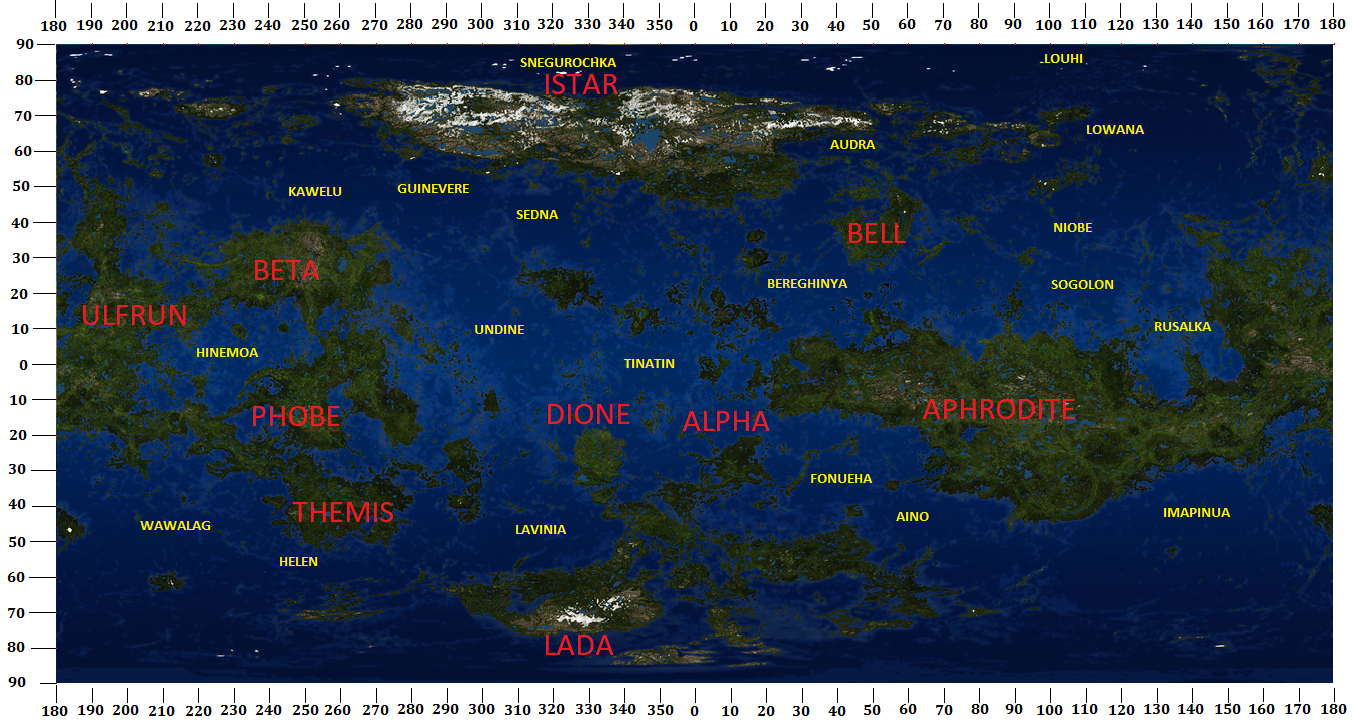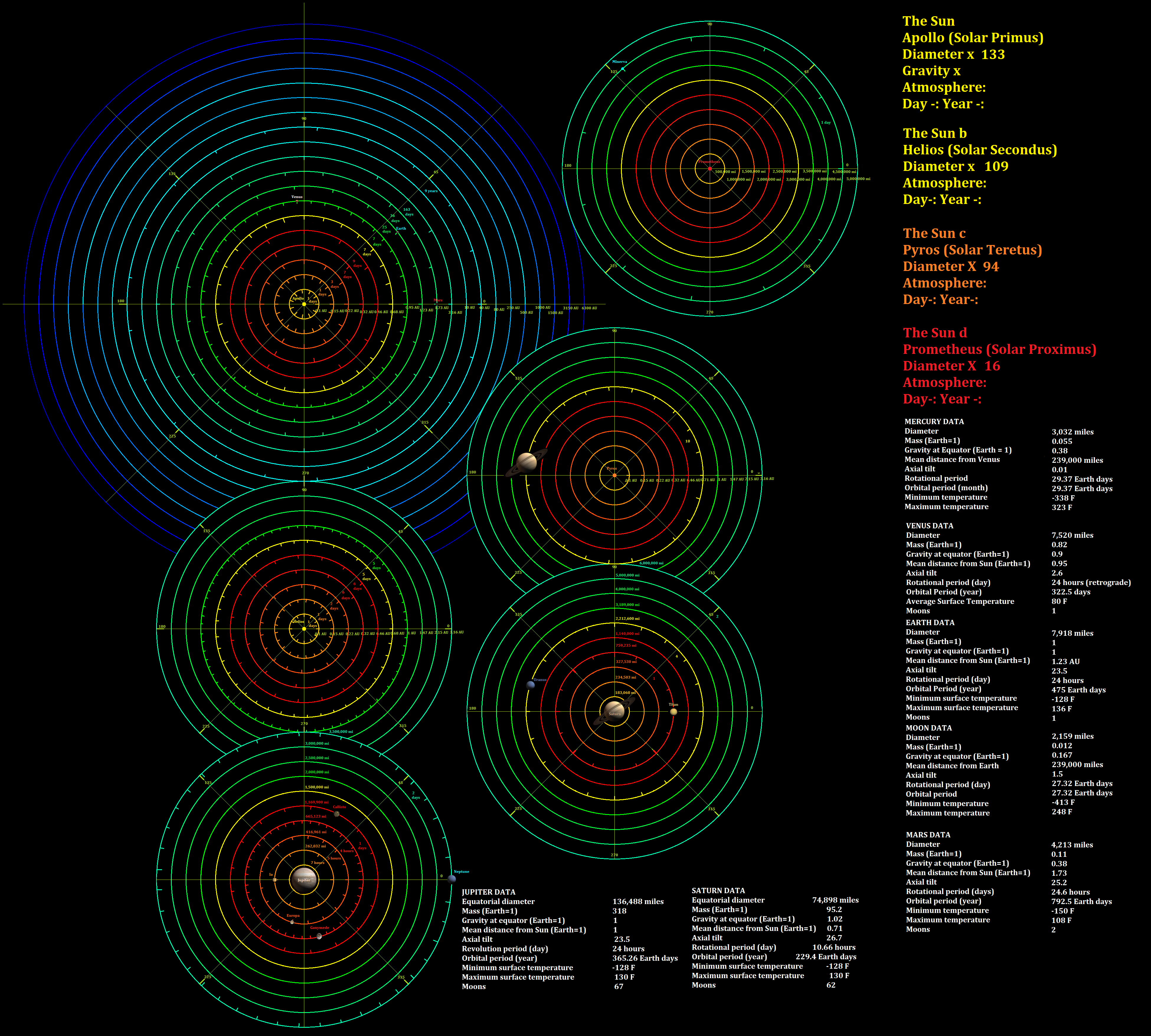Thomas Bowman
First Post

Diameter: 7520 miles
Gravity 9/10
Day: 24 hours
Year: 321 1/5 day
The Sun rises in the west and sets in the east.
Other than that the whole planet is tropical, the exception being high in the mountains where it snows, and where one can get a glimpse of a blue sky.
The possible game systems I am thinking of using this in include D20 Modern and D&D 3.5 and 5th edition. Navigation is difficult on this world unless one can fly above the clouds. One sees the Sun as a diffuse glow in the sky through the perpetual cloud cover. Typical terrains are rain forests, jungles, swamps, oceans, rivers, fields. Dinosaurs are a common site as are other reptilian creatures. For those who can get above the clouds, the sky presents an interesting site, there is a large moon, it appears 150% as big as Earth's moon does from Earth, it goes through a cycle of phases every 27 days. it presents an unremarkable cratered surface, their are two other suns that appear in the sky, they are smaller and dimmer than the primary Sun, and it gets diffused by the perpetual cloud cover anyway, but on top of the highest mountain, when all the suns and Moon are down, the stars become visible. All of the stars from all the constellations known to Earth are visible in this sky, but their is one missing from the Constellation Centaurus, Rigel Kentarus otherwise known as Alpha Centauri.
Some Earth humans have already landed here already, there are many colonies from Earth on the continents of Ishtar and Aphrodite.
They arrive in a spaceship that looks like this:

It can carry 100 humans from Earth to Venus, and their are launch pads on Venus for making the return journey. Both stages of this rocket are reusable.
Also there are some native humans that live on this world prior to the arrival of the Earth colonists.





